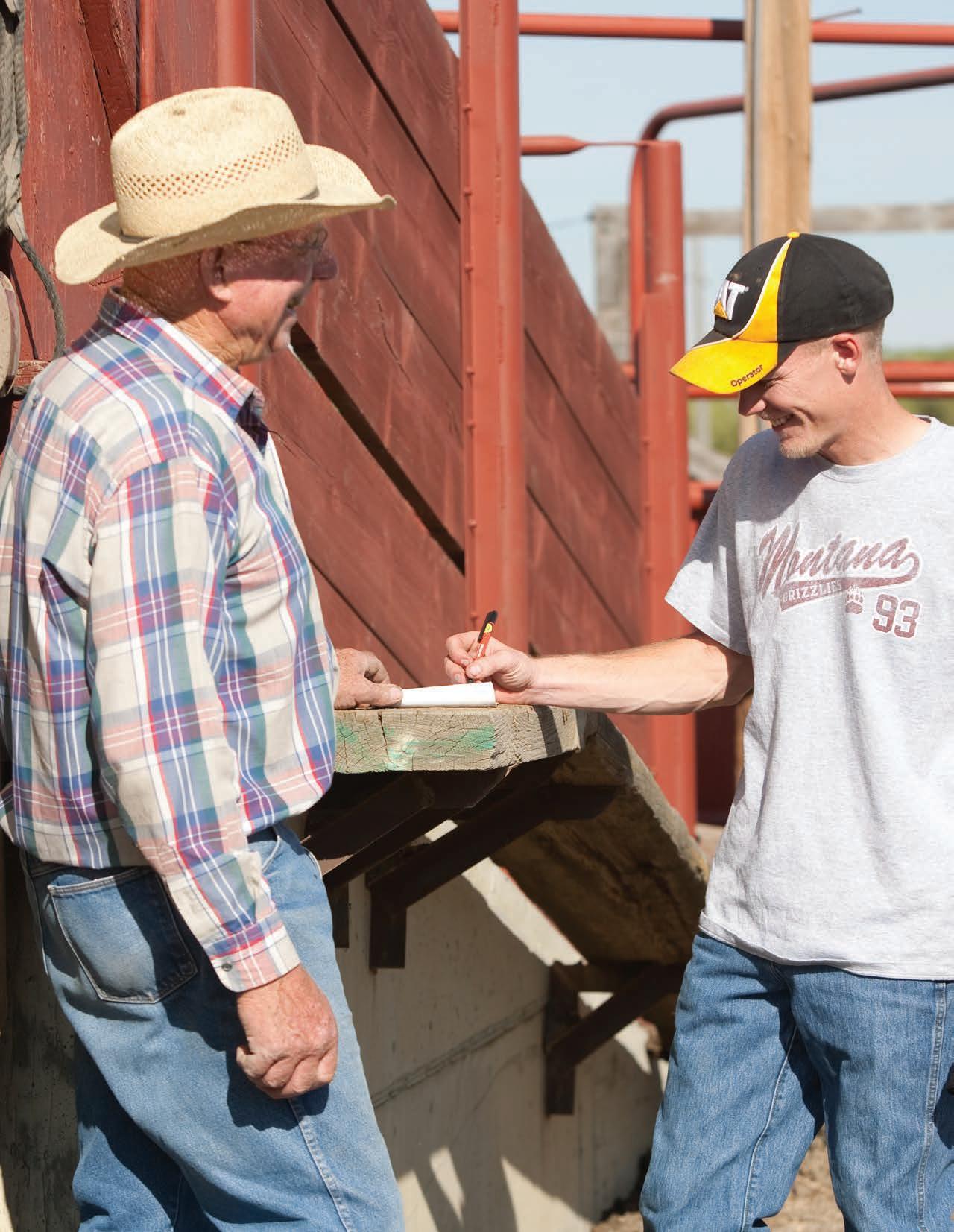
11 minute read
Chapter 2 — Fitness for Transport
CHAPTER 2.
FITNESS FOR TRANSPORT
CHAPTER 2.1
INTRODUCTION
One of the most important decisions in transporting cattle is to determine if an animal is fit to be transported, and if not, if transport should be postponed to allow for treatment, or if euthanasia should be carried out instead. Having the knowledge to make this decision is essential for animal well-being. There are multiple considerations to keep in mind as you make decisions on if an animal is fit for transport, such as the health of the animal, the mobility of the animal, and the body condition of the animal. Fitness for transport guidelines include the following:
» DO NOT move non-ambulatory cattle to market under any circumstances. » Make the decision to treat, cull, or euthanize cattle promptly. » Delay transport of any cattle that appear to be exhausted or dehydrated until the animal is rested, fed, and hydrated. » Use a BQA Transportation certified transport company that is knowledgeable about your cattle care expectations and provides for the safety and comfort of the cattle during transport. » DO NOT transport cattle to a packing or processing facility until all proper treatment withdrawal times have been followed. » DO NOT transport cattle or dairy with a poor body condition score (i.e., a body condition score of less than 2). » DO NOT transport heifers or cows where calving is imminent and likely to occur during the transportation or marketing process. » DO NOT transport cattle that require mechanical assistance (e.g., hip lifts) to rise and walk except for veterinary treatment.
When using any handling device, abuse must not be tolerated. » DO NOT transport cattle with bone fractures of the limbs or injuries to the spine. Cattle with a recent fracture unrelated to mobility should be culled and transported directly to a packing or processing facility if they are ambulatory and can withstand the rigors of transport. » DO NOT transport cattle with conditions that will not pass pre-slaughter inspection at a packing or processing facility.1
2.2 Body Condition Scoring
Nutritional management of the cowherd includes using a scientifically valid method called Body Condition Scoring (BCS) to monitor herd nutritional status. A cow's BCS reflects the amount of energy stores in her body at a given point in time. BCS at calving is an indicator of reproductive success in the coming production year. BCS values range from 1 (emaciated) to 9 (obese). Targeting a BCS of 5–6 for cows at calving promotes optimum reproduction and calf health. Cows that calve at a lower BCS have reduced pregnancy rates. Also, cows calving at a lower BCS may produce a lower volume and quality of colostrum and less milk which can result in reduced disease resistance and growth in the calf. Calves birthed by thin cows have increased risk of morbidity and mortality during the first two to four weeks of life. Immunocompromised calves have an increased risk of sickness when exposed to stress and pathogens throughout their life. Below is a resource for BCS scoring beef cows from Oklahoma State Cooperative Extension Service. Body Condition Scoring involves visual appraisal of the cow. The hindquarter, shoulder, backbone, ribcage, and the transverse spinous processes (lateral extensions from the vertebrae) between the ribcage and hip bones are common evaluation points. For example, observe the last half of the ribcage. If more than two ribs are easily discernible, then the BCS is probably less than 5. Another example, if the tips of the tranverse spinous processes and the individual vertebra in the backbone are visually apparent, expect the cow to receive a body condition score of 4 or lower. Descriptions of the nine body condition scores include the following: » BCS 1. The cow is severely emaciated and physically weak with all ribs and bone structure easily visible. Cattle in this score are extremely rare and are usually affected by with a disease and/or parasitism. » BCS 2. (Figure 2) The cow appears emaciated, similar to BCS 1 described above, but not weakened. Muscle tissue appears severely depleted through the hindquarters and shoulder.

Figure 2. BCS 2. Photo courtesy of Arkansas Extension Service.
» BCS 3. (Figure 3) The cow is very thin with no fat cover on ribs or in the brisket and the backbone is easily visible. Some muscle depletion appears evident through the shoulder and hindquarters.
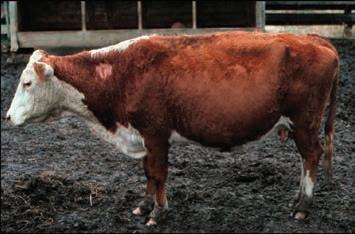
Figure 3. BCS 3. Photo courtesy of Arkansas Extension Service.
» BCS 4. (Figure 4) The cow appears thin, with ribs easily visible and the backbone showing.
The spinous processes (along the edge of the loin) are still sharp but barely visible individually. Muscle tissue is not depleted through the shoulders and hindquarters.
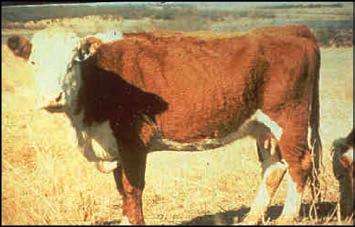
Figure 4. BCS 4.
» BCS 5. (Figure 5) The cow may be described as moderate to thin. The last two ribs may be seen and little evidence of fat is present in the brisket, over the ribs, or around the tail head.
No muscle depletion is seen in the hindquarter or shoulder area. The tranverse spinous processes are now smooth and no longer identifiable.
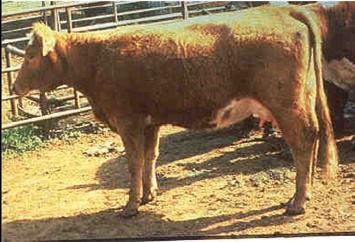
Figure 5. BCS 5.
» BCS 6. (Figure 6) The cow has a good smooth appearance throughout. Some fat deposition is present in the brisket and over the tail head.
The back appears rounded and fat can be palpated over the ribs and pin bones.
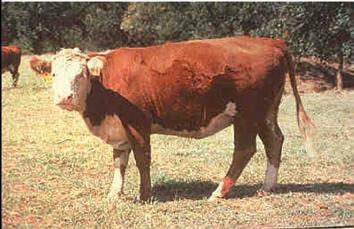
Figure 6. BCS 6. » BCS 7. (Figure 7) The cow is in very good flesh. The brisket is full, the tail head shows pockets of fat and the back appears square because of fat. The ribs are very smooth and covered with fat.

Figure 7. BCS 7.
» BCS 8. The cow is obese. Her neck is thick and short and her back appears very square because of excessive fat. The brisket is distended and she has heavy fat pockets around the tail head. » BCS 9. These cows are very obese and are rarely seen. They can be described as similar to 8 but taken to greater extremes. They also have a heavy deposition of udder fat. Some producers ask whether cows need to be felt to determine fatness or if they can simply be looked at to assess condition scores. A recent study indicated that cows could be separated equally well by palpation of fat cover or by visual appraisal, but the average score may vary slightly depending on the method used. For cattle with long hair, handling may be of value, but when hair is short, handling is unnecessary. Keep in mind that shrink can alter the looks and feel of the cattle as much as one score. Animals in late pregnancy also tend to look fuller and a bit fatter.
2.3 Transport Fitness
Drivers should inform producers of their expectation for cattle fitness prior to arriving to haul cattle and should not haul cattle that are unfit for the rigors of transport. The table below identifies scenarios in which cattle are fit versus unfit for transport.
Fit for Transport
» Cattle that have passed all treatment withdrawal times. » Cattle that are not exhausted or dehydrated. » Cattle with a body condition score greater than 2 (for both beef and dairy scale). » Mobility scores should be used to determine if an animal can be shipped. Cattle with a mobility score of 1–2 are fit for transport (scale of 1 - normal and walks easily; 2 - minor stiffness; 3 - obvious stiffness and difficult mobility; 4 - extreme difficulty when moving).2 » Cattle with a mobility score of 3 should be shipped with special provisions, including location on truck and awareness of their condition. » Ambulatory cattle with a recent fracture, unrelated to mobility, should be transported directly to a packing or processing facility. » Heifers or cows where calving is imminent and likely to occur during the transportation or marketing process. » Cattle that require mechanical assistance (e.g., hip lifts) to rise and walk. » Cattle with bone fractures of the limbs rendering inability to bear weight or injuries to the spine. » Cattle with conditions that will not pass pre-slaughter inspection at a packing or processing plant. » Non-ambulatory cattle. Cattle with a mobility score of 4 are not fit for transport. » Cattle that pose a public health threat, such as animals showing neurological signs or zoonotic disease symptoms.
Unfit for Transport
2.4 Cull Cattle
The overwhelming majority of cattle are marketed in good health and physical condition. Regardless of herd size, all beef cow operations will have some cull animals. Good culling management adds value to the operation and industry. Poor culling management forgoes this value and may contribute to unacceptable product defects, animal welfare, and public health concerns, creating liability for the producer and industry. Not all culled animals are suitable for processing into higher-value products. Some compromised cattle should not enter intermediate marketing channels because of animal well-being concerns. Instead, these cattle should be sold directly to a processing plant or euthanized (see euthanasia section), depending on the severity of the condition, processing plant policy, and USDA or state regulations. Culling guidelines include: » DO NOT market culled animals that pose a public health threat. » Be certain that ALL animals shipped to market have cleared mandated withdrawal times. » DO NOT market culled animals that have an advanced terminal condition. » DO NOT send disabled culled animals to market. » Market culled animals BEFORE they become severely emaciated. » DO NOT market culled animals that have an advanced eye lesion.
2 https://www.youtube.com/watch?v=QIslfHCvkpg
2.5 Marketing Guidelines
LAMENESS
Lameness seriously compromises well-being and is a management priority. Some of these problems are unavoidable, particularly with bulls. However, many problems with lame cattle are easily avoidable if producers cull animals before they develop feet and leg problems due to old age or chronic health issues. If ambulatory, the packer is required to remove all tissue associated with an arthritic joint. Additionally, excessive bruising results in large trim losses. Disabled cattle should either be marketed directly to the packer or humanely euthanized.
NON-AMBULATORY (DOWNER) CATTLE
A non-ambulatory animal (commonly referred to as a "downer") is unable to stand up or walk, even if assisted. Design and conduct all procedures to prevent cattle from becoming non-ambulatory. In the event an animal becomes non-ambulatory, manage and care for it in a humane manner. Marketing cattle promptly before this issue occurs will promote a better quality of life for the animal and be more efficient for the operation.3, 4 Guidelines for non-ambulatory animals include: » Promptly diagnose non-ambulatory animals and determine whether the animal should be humanely euthanized or receive treatment. » Provide adequate feed and water to non-ambulatory cattle at least once daily. » Move downer animals very carefully to avoid compromising animal welfare. » Acceptable methods of transporting downers include a sled, low-boy trailer, or the bucket of a loader. Animals should not be scooped into a front-loader bucket but rather humanely rolled into the bucket by caretakers. » If animals are unable to sit up or rise without assistance and refuse to eat or drink, they should be promptly and humanely euthanized. Even when treatment is attempted, cattle in this condition should be euthanized within 24–36 hours. » DO NOT send non-ambulatory cattle to a livestock market or processing facility.
UNACCEPTABLE ACTIONS WHEN MANAGING A NON-AMBULATORY ANIMAL INCLUDE THE FOLLOWING: » NEVER drag non-ambulatory animals. » NEVER use an electric prod to stimulate an injured or disabled animal to get up unless essential to prevent further injury or death. » NEVER use chains, rope, or cables to lift, suspend, or move the animal unless necessary to prevent further injury or death, if allowed by state law. » NEVER let a non-ambulatory animal remain in any area where they may get walked on or trampled.
3 https://www.aabp.org/Resources/AABP_Guidelines/transportationguidelines-2019.pdf
4 http://aabp.org/Resources/AABP_Guidelines/non-ambulatory2020.pdf
GENERAL CONSIDERATIONS FOR "FIT" VS. "UNFIT" CATTLE FOR TRANSPORT
» All cattle appear healthy and no apparent foot injuries are noted. » Cattle being transported for slaughter meet the packing plant's minimum weight requirements. » Cattle being transported for slaughter meet the USDA Food Safety and Inspection Service (FSIS) minimum health requirements. » DO NOT accept cancer eyes, emaciated animals, downers, or animals that appear sick. » DO NOT accept cattle that exhibit signs of Foot and Mouth Disease, as outlined in
Section 6.4. Operation management must immediately be notified of cattle showing these signs. » When eye cancer is detected, have the eye examined to determine treatment options, or market the animal as quickly as possible and before advanced stages develop — advanced stages of tumor development generally result in the head and sometimes the whole animal being condemned. » If an individual animal passes the above requirements, but is STILL questionable and it MUST be loaded, be sure to load it onto the back of the trailer to minimize stress and movement distance (last on, first off ).


